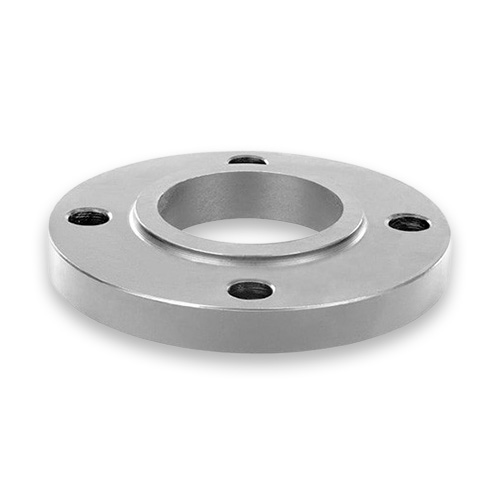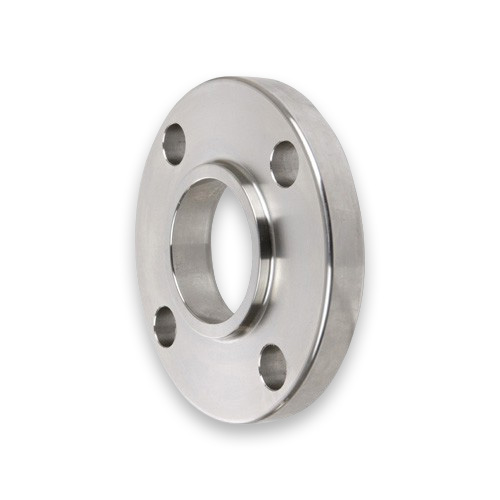Slip-on flanges are one of the most common elements in the piping system due to their installation simplicity and broad application. However, like any other mechanical parts, they are not exempted from problems. A common issue that industries with slip-on pipe flanges encounter is that of crack formation. These cracks can result in dire consequences such as system failures, leaks and expensive damages. Why these flanges crack is important to know to avoid such problems and to guarantee that your piping systems will last longer and are dependable. In this article, we explore the typical reasons of crack formation in slip-on flanges and how to avoid them
Material Defects and Quality
The slip-on flanges crack mainly because of the defects in the material that is used in the making of slip-on flanges. These defects can be caused by contamination in the raw material or by the process of manufacturing. For example, if the metal is not well smelted, it may have voids or inclusions that compromise the flange’s strength. These areas become weak points and when these flanges are stressed during installation or operation, they can crack
To prevent this, one needs to obtain slip-on pipe flanges from reliable manufacturers who employ strict quality assurance measures. It is important to ensure that the materials used to develop the product meet the right specifications and standards, this helps to minimize on the occurrence of material defects
Improper Installation Techniques
The other main reason that contributes to the development of crack in slip-on flanges is poor installation. When tightening flanges it is very important to ensure that flanges are properly aligned and that the bolts are tightened to the right torque. When the bolts are tightened unevenly, there is a tendency of having stress concentrations around the flange and this may lead to cracking. Also, excessive or inadequate tightening of the bolts leads to flange damage as well as other problems. This is why proper training and following the installation guidelines should be observed to avoid such problems. Using torque wrenches to achieve the recommended bolt tension and following a proper tightening sequence can help distribute the stress evenly and reduce the likelihood of cracks
Thermal Stresses
Piping systems are subjected to fluctuating temperatures and this results to thermal expansion and contraction. Slip-on flanges connections are more vulnerable to thermal stresses than other flanges because they are not as strong as weld neck flanges. If the flange and pipe are subjected to temperature changes, the expansion and contraction of the two elements are different hence the development of stress at the joint that may cause cracks
In order to reduce thermal stress, the operating temperature range should be taken into account and flanges of appropriate materials with the right coefficients of thermal expansion should be used. Besides, the insulation should be properly done and the system design should accommodate thermal expansion to reduce the pressure on the flanges


Corrosion and Environmental Factors
Slip-on flanges are not immune to corrosion and as a result, it is a problem that affects all types of flanges. The material used in the flange is prone to corrosion when used in areas that have corrosive substances. This corrosion can lead to formation of certain areas of the material which are vulnerable to cracking and this is so because of the mechanical or thermal stress.
Purchasing flanges of corrosion resistant materials like stainless steel or flanges that are made from materials that are suitable for the environment in which they are to be used can also reduce this risk. Moreover, the use of protective coatings and routine checks for signs of corrosion can also help increase the flanges’ durability
Vibration and Mechanical Stresses
In most industrial processes, piping systems are exposed to vibrations from pumps, compressors, and other related machinery. These vibrations can lead to fatigue in slip-on flanges connections and hence cause formation of cracks in the flanges. Dynamic loading such as pressure variations, water hammer, or shock loading can also cause cracking
To avoid this, one should make sure that the piping system is adequately supported and that wherever there is need for it, the use of vibration isolators should be made. This is because problems that may be arising in the building can be easily detected and fixed before they get out of hand
Inadequate Design and Engineering
Sometimes, the design and engineering of the piping system itself can contribute to the cracking of slip-on flanges. If the flanges are not appropriately sized or if the system is not designed to accommodate the operational stresses, the flanges can be subjected to excessive loads, leading to cracks
Working with experienced engineers and using advanced design tools can help ensure that the piping system is adequately designed to handle the expected loads and stresses. This includes selecting the right type and size of flanges and ensuring that the system layout minimizes stress concentrations


Prevention and Best Practices
To minimize the risk of cracks in slip-on flanges, consider the following best practices
- Material Selection : Choose high-quality, certified materials that meet industry standards.
- Proper Installation : Ensure correct alignment and even bolt tension during installation.
- Temperature Management : Use materials suitable for the operating temperature range and provide for thermal expansion.
- Corrosion Protection : Select corrosion-resistant materials and apply protective coatings.
- Vibration Control : Properly support the piping system and use vibration dampeners.
- Regular Maintenance : Conduct routine inspections and maintenance to identify and address potential issues early.
- Professional Engineering : Engage experienced engineers to design the piping system and select the appropriate components.
Conclusion
By understanding the causes of cracks in slip-on flanges and implementing these best practices, you can significantly reduce the risk of flange failure and ensure the reliability and longevity of your piping systems. Investing in quality materials, proper installation, and regular maintenance will pay off in the long run by preventing costly repairs and downtime
You can Contact Alloyed Sustainables today at sales@alloyedsustainable.com to learn more about our Slip-on Flanges and how you can use them in industrial applications.

